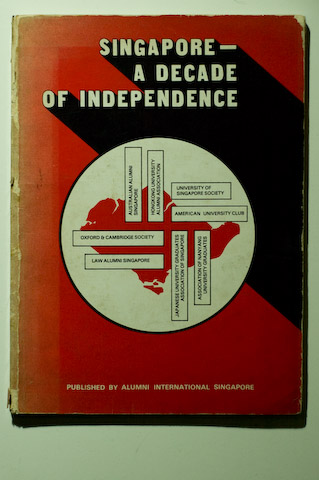Blocks 3, 4, 8 to 11, and 11A to 14 are some blocks of flats in Hougang Avenue 3 and 7 that will be cleared by August 2008 as part of the HDB’s plans to continually improve facilities and land conditions in Singapore. Armed with a deep sense of impending loss, I decided to drop by for a photo shoot for an upcoming project. Yet, what was supposed to be a nostalgic journey turned into one filled with sympathy at the living conditions and despair the place seemed to be in.

Three things really struck me was how as I walked up the stairs of a block of rental flats.
Firstly, almost every floor had a spray-painted sign that read “O$P$”, a sign that loan-sharks frequented this area and how desperate these people were that they had to lend money from them.
Secondly, the corridors of each floor were dim and musty that even the most optimistic tenant would be overshadowed by the lighting conditions.
Finally, many tenants had electricity meters that operated on some kind of credit top-up system, too poor to afford regular electricity bills.
You wonder with so much economic prosperity in Singapore, surely these people deserve better living conditions simply by the fact that they are citizens as well. Suddenly, I felt my initial disappointment of “yet another demolition” was uncalled for because these people definitely deserved better.
But at the same time, these people seemed to cherish their “community” better than their material well-being. The nearby market and town centre was bustling with old folks sitting around and just watching the world go by, and I can understand how the demolition would take this all away too.
CORPORATISATION OF COFFEESHOPS
Is it just me, or are our coffee shops increasingly being bought up by corporations? Today, I read about how foodcourt operator, Koufu, had paid $12 million for a coffee shop in Jurong. Might we soon expect similar signages, uniforms and perhaps even standardisation of food variety like in every Koufu coffee shop in Singapore? Would all coffeeshops and hawker centres become air-conditioned?
I think the common thread of these two things that struck me in the past two days is how I have yet to reconcile progress and nostalgia, returning once again to the fundamental tension between modernism and postmodernism. Is newer always better? Is there value in the past?

 How else can Singapore look like today?
How else can Singapore look like today? An interesting point to note was how this book was meant to raise funds for the organisation to built a “Monument to the Early Pioneers” that never came true. All that is left of this effort is a foundation stone (right) that is found in the National Archives today. It was originally located at the waterfront side of Collyer Quay and was relocated to its present location because of road works there.
An interesting point to note was how this book was meant to raise funds for the organisation to built a “Monument to the Early Pioneers” that never came true. All that is left of this effort is a foundation stone (right) that is found in the National Archives today. It was originally located at the waterfront side of Collyer Quay and was relocated to its present location because of road works there. Another group that proposed an alternative vision of urban Singapore was the Singapore Planning and Urban Research Group (S.P.U.R.) that was set up in 1965 by a group of architects and planners. Its more prominent members include William Lim and Tay Kheng Soon. Its ideas and works can be found in “SPUR 1965-1967” (left), a self-published report and you can still purchase limited copies of it at
Another group that proposed an alternative vision of urban Singapore was the Singapore Planning and Urban Research Group (S.P.U.R.) that was set up in 1965 by a group of architects and planners. Its more prominent members include William Lim and Tay Kheng Soon. Its ideas and works can be found in “SPUR 1965-1967” (left), a self-published report and you can still purchase limited copies of it at 